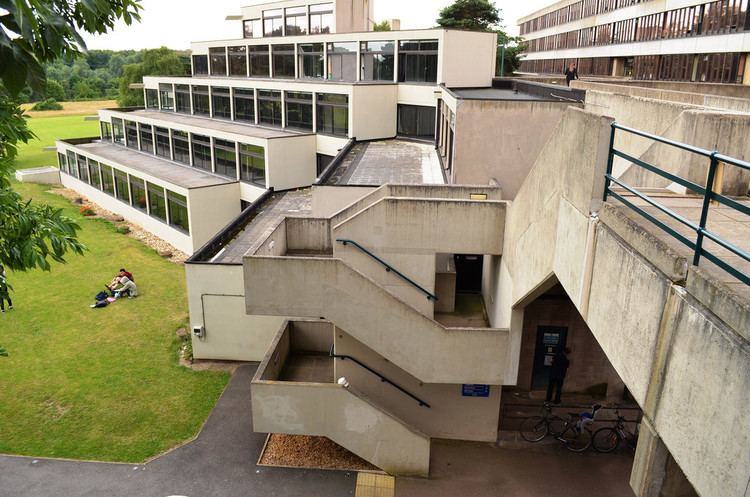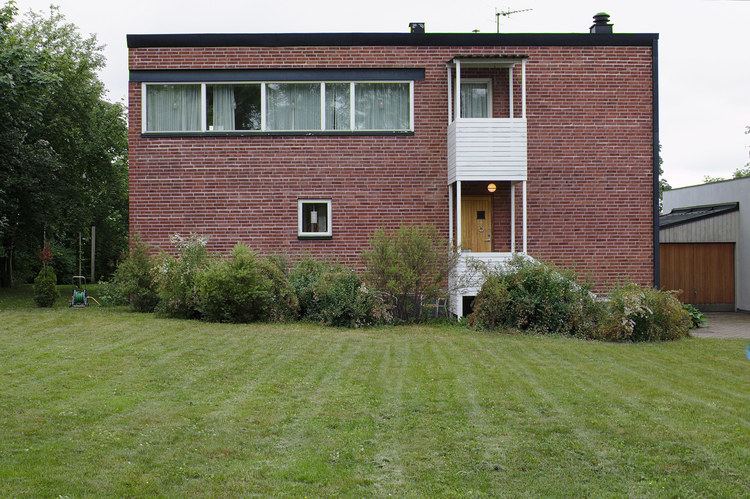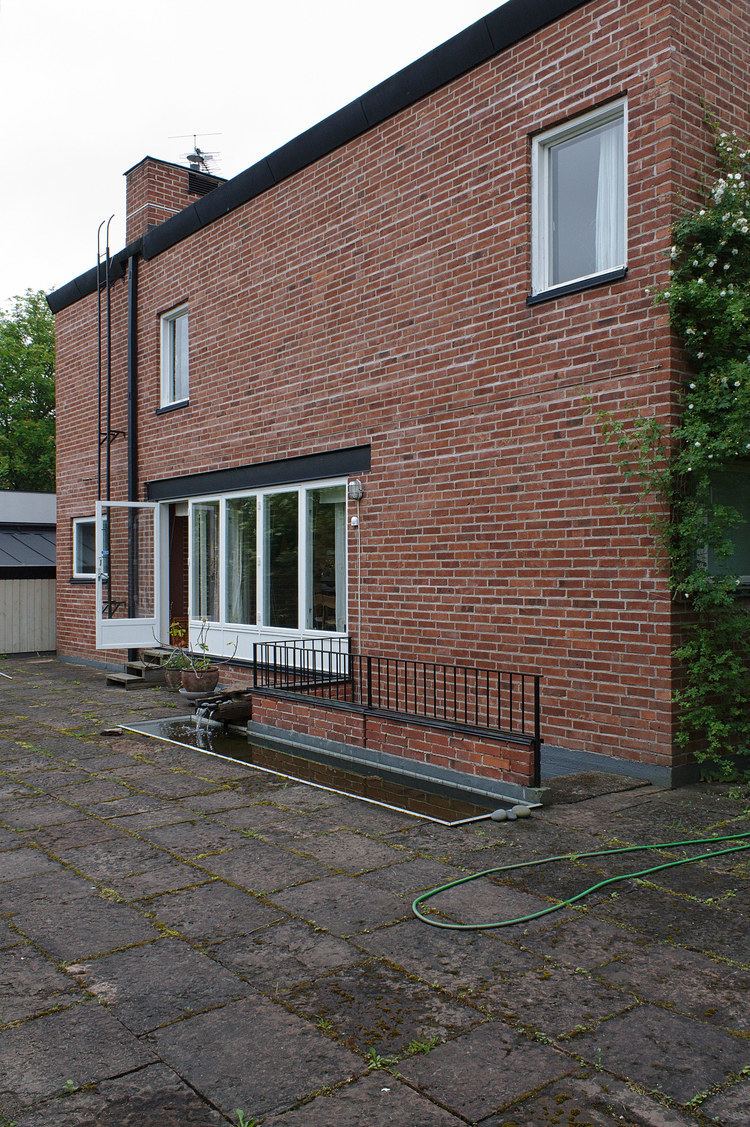Architect Lennart Holm | ||
 | ||
Similar Pomnik Stena Sture Star, Church of Holm - Uppland, Uppsala‑Näs Kyrka, Vassunda kyrka, Årsta Church - Uppsala | ||
Villa Göth, completed in 1950, is a house on Döbelnsgatan in the Kåbo neighbourhood of the city of Uppsala. The house is listed as having special architectural interest in Sweden (byggnadsminne LINK). Architects Bengt Edman and Lennart Holm designed it as the residence of Pharmacia head Elis Göth. The building has significance in international architectural history as the believed source of the term brutalism.

Villa Göth, which has two floors and a basement, is built in dark brick. The windows are plain but form partial rows in the façade. The visible I beams over the window sections in the front and rear of the building are an example of how the choice of materials is openly displayed in the house. The roof is a flat gable roof. On the interior, the floor plan is open, and materials are consistently made visible in a straightforward way. In the ceilings, the tongue-and-groove pattern of the boards used to build the forms for the poured concrete is visible. Several interior walls are of the same dark brick as the exterior. The bathrooms on the first floor are formed of raw concrete (béton brut) in the form of Alvar Aalto’s famous Aalto Vase. Centrally located in the house is the open stairway that connects the floors.

Villa Göth and Brutalism

The term brutalism was made popular when the British architectural critic Reyner Banham used it in 1966 in his book The New Brutalism: Ethic or Aesthetic? to characterize a new group of architectural trends, specifically in Europe. It is believed to have originated in the expression “nybrutalism” (new brutalism) coined in 1950 by the Swedish architect Hans Asplund in a facetious comment about Villa Göth. The expression was spread by British colleagues visiting Sweden and adopted by younger architects in the UK. In a letter from Hans Asplund to the editor of the Architectural Review, published in August 1956, Asplund describes how he first used the term. The letter is reproduced in Reyner Banham’s New Brutalism.
New brutalism is not only an architectural style; it is also an approach to architecture, a striving to create simple, honest, and functional buildings by, for example, not allowing them to create associations or emotions. Stylistically, brutalism, with its strict, modernistic design language, is said to be a reaction to the architecture of the 1940s, much of which was characterized by a retrospective nostalgia.
Brutalism is an expression often used derogatorily to denote large-scaleness, insensibility, and the use of raw materials. Villa Göth may make a severe, aloof impression, but it is at the same time a simple and carefully prepared building with great architectonic qualities. This well-preserved and culturally interesting house was listed as historically significant by the Uppsala county administrative board on March 3, 1995.

